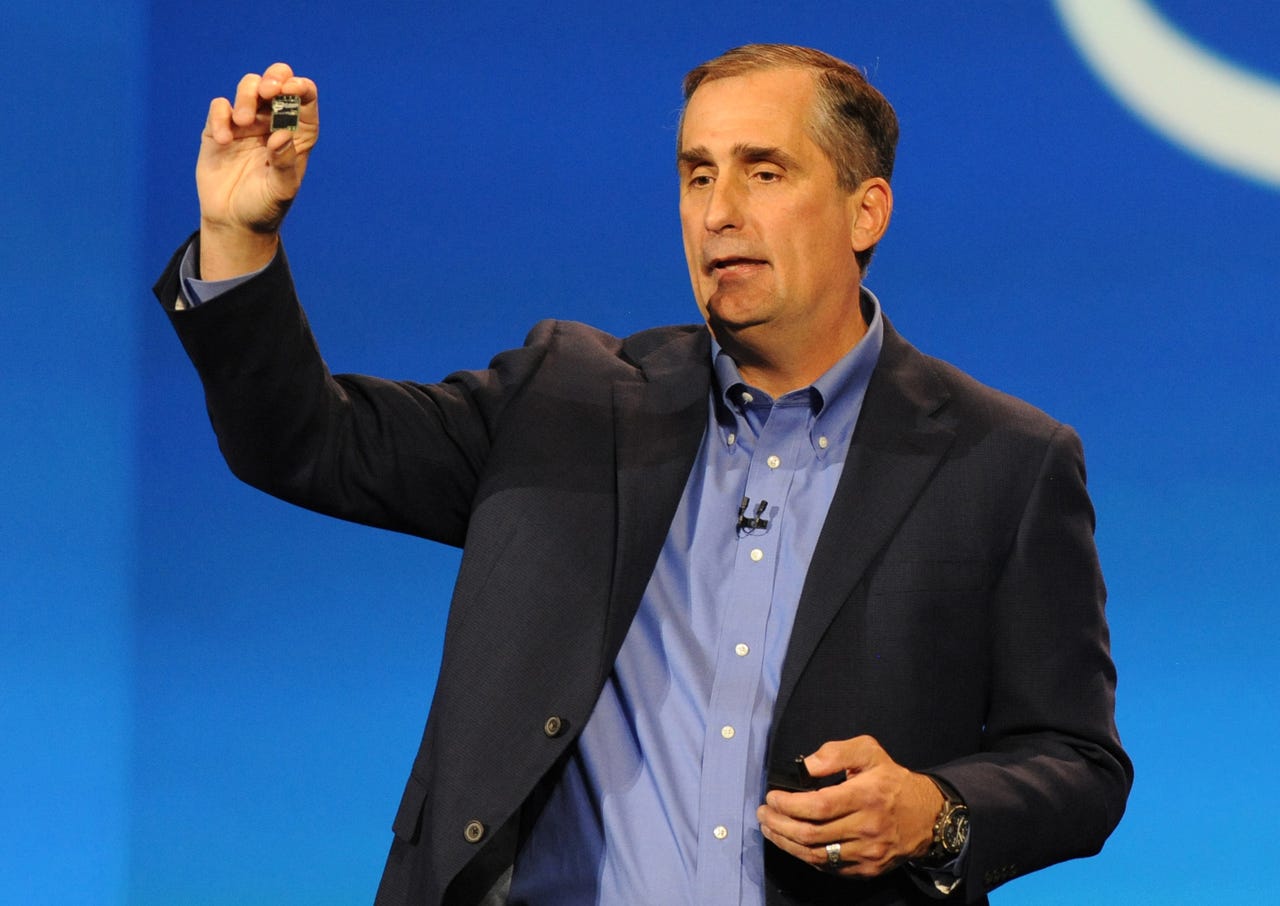Intel looks beyond PCs to the cloud and Internet of Things


Krzanich believes cloud and connected devices to be the future of Intel
Cloud, connectivity and the Internet of Things (IoT) are key focuses for Intel, its CEO Brian Krzanich has said, as the company looks to realign for the future.
Just last week, the chipmaker announced plans to cut 12,000 jobs - a figure representing 11 percent of its workforce - as part of a significant restructure brought upon by a decline in sales of PCs and other hardware.
Now, writing in a blog post, Krzanich has set out his vision of how Intel can transform from a PC company to "a company that powers the cloud and billions of smart, connected computing devices. That, he claims, will be achieved by focusing on five core themes - connected things, memory, connectivity, Moore's Law and cloud - with the final element seemingly forming the core of the company's plans.
Indeed, Krzanich dubs cloud as "the most important trend shaping the future of the smart, connected world - and thus Intel's future". The reason, he says, is "virtualization and software are increasingly defining infrastructure in the cloud and data center," areas which he claims play to Intel's strength as a company.
Intel also believe that cloud directly ties into analytics and big data, so Krzanich wants to "accelerate the power and value of analytics by continuing to innovate in high-performance computing, big data and machine learning capabilities".
It's through cloud that Intel sees big potential for growth in the IoT because every connected device is connected to the cloud, and thus "means that everything that a 'thing' does can be captured as a piece of data, measured real-time, and is accessible from anywhere," says Krzanich.
Intel appears to view its cloud and data center offerings as services which can be pushed as key to organisations looking to derive benefits and insights from the IoT, although it's autonomous vehicles, industrial and retail which the company sees its "primary growth drivers" surrounding IoT.
It's therefore perhaps unsurprising that Krzanich outlines 'connectivity' as another key area of focus for Intel's future - and yet another area he ties back to cloud, particularly when it comes to autonomous vehicles.
"It must have connectivity to the cloud, and the cloud must have machine learning capabilities to constantly be guided by the most up-to-date algorithms and data sets that allow the vehicle to operate safely. In this way, connectivity is fundamental to every one of the cloud-to-thing segments we will drive," he says. Krzanich also cites 5G as an area of connectivity which Intel must attempt to provide leadership in.
17 ways the Internet of Things can go horribly wrong
Naturally, Intel, the company which derived Moore's law - named after the organisation's original founder - continues to put a strong emphasis developing ever-increasing computational power; and Krzanich dismisses those who claim that Moore's Law is obsolete.
"In my 34 years in the semiconductor industry, I have witnessed the advertised death of Moore's Law no less than four times. As we progress from 14 nanometer technology to 10 nanometer and plan for 7 nanometer and 5 nanometer and even beyond, our plans are proof that Moore's Law is alive and well," he says.
By combining cloud, connectivity and Moore's Law, Intel hopes that it can evolve what it does and remain a high-profile player in the technology industry.
"Intel is uniquely positioned to power the cloud and drive the increasingly smart, connected world. We see tremendous opportunity in the growth of this virtuous cycle... which will provide a strong and dynamic future for Intel," Krzanich says.
READ MORE ON INTEL